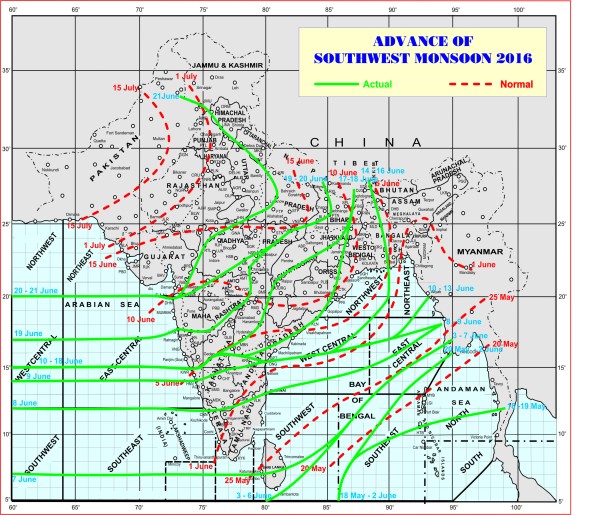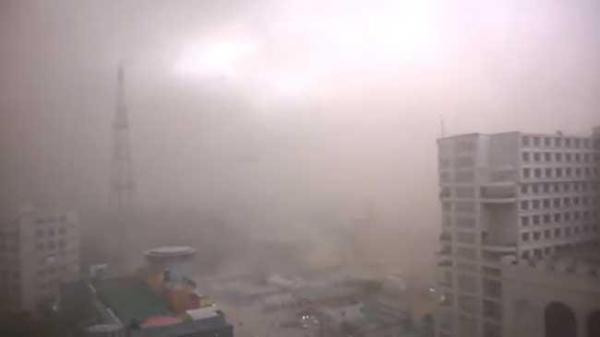If we’re going to halt destructive carbon emissions now hitting the atmosphere, then the world is going to have to swiftly stop burning oil, gas and coal. And the most effective and economic pathway for achieving this removal of harmful present and future atmospheric carbon emissions is a rapid renewable energy build-out to replace fossil fuel energy coupled by increases in energy efficiency.
(To halt and reverse climate change related damages, fossil fuel based greenhouse gas emissions into the atmosphere need to stop.)
This week, major advances in the present renewable energy build and introduction rate were reported. Chiefly, India and China are rapidly adding new solar panels to their grid, the monthly rate of global EV sales surpassed 100,000 in June, GM is offering a very inexpensive electrical vehicle in China, and Tesla has ramped up plans for Model 3 EV production from 500,000 vehicles per year to 700,000 vehicles per year.
India and China Solar Gangbusters
In the first half of 2017, India is reported to have built 4.8 gigawatts (GW) of new solar energy capacity. This construction has already exceeded all 2016 additions. The country is presently projected to build more than 10 GW of new solar energy capacity by year-end. Large solar additions are essential to India meeting its goal of having 100 GW of solar electrical generation available by 2022. It is also crucial for reducing carbon emissions from fossil fuel fired power plants (coal and gas).
(Total solar capacity in India could hit 30 GW by end 2018. India will need to add solar more rapidly if it is to achieve its goal of 100 GW by 2022. Image source: Clean Technica.)
Further east, China added 24.4 Gigawatts of new solar energy in just the first half of this year. This pushed China’s total solar energy generating capacity to a staggering 101 GW. It also puts China firmly in a position to surpass last year’s strong rate of solar growth of 34 GW. China’s previous goal was to achieve 105 GW of solar production by 2020. One it will hit three and a half years ahead of schedule. China now appears to be on track to overwhelm that goal by achieving between 190 and 230 GW of solar generation by decade’s end.
(China has already overwhelmed its 2020 target for added solar capacity. Recalculating based on present build rates finds that end 2020 solar generation levels are likely to hit between 190 and 230 GW for this global economic powerhouse. Image source: China National Energy Administration.)
Such strong solar growth numbers in traditional coal-burning regions provides some hope that carbon emissions growth rates in these countries will continue to level off or possibly start to fall in the near future. Adding in ambitious wind energy and electrical vehicle build-outs in these regions provides synergy to the larger trend. If an early carbon emissions plateau were to be achieved due to rapid renewable energy build-outs in China and India, it would be very helpful in reducing overall levels of global warming during the 21st Century.
GM’s $5,300 EV for the Chinese Market
Adding to the trend of growing movement toward an energy switch in Asia this week was GM’s introduction of a small, medium-range electrical vehicle for the Chinese auto market. GM is partnering with China’s Baojun to produce the E100. A small EV that’s about the size of the U.S. Smart Car. The E100 has about a 96 mile all-electric range, a 62 mph top speed, and goes for $14,000 dollars before China’s generous EV incentives. After incentives, a person in China can purchase the vehicle for $5,300. GM states that 5,000 buyers registered to purchase the first 200 E100s hitting the market last month, while a second batch of 500 vehicles will be made available soon.
100,000 Electrical Vehicle Sales Per Month by Mid 2017
Globally, electrical vehicle sales have ramped up to 100,000 per month during June of 2017. This growth is being driven primarily by increased sales volumes in China, India, Japan, Australia, Europe and the U.S. as more and more attractive EV models are becoming available and as governments seek to limit the sale of petroleum-burning vehicles in some regions.
(Projected growth rates for EV sales appear likely to surpass present projections through 2020. Image source: Cleantechnica.)
Meanwhile range, recharge rates, acceleration, and other capabilities for these vehicles continue to rapidly improve. This compares to fossil fuel vehicles which have been basically stuck in plateauing performance ranges for decades. 2017 will represent the first year when sales of all EV models globally surpass 1 million per year. With a possible doubling to tripling of EV production through 2020.
Telsa Aiming for 700,000 Per Year Model 3 Sales
2018 will likely see continued growth as new vehicles like the Model 3, the Chevy Bolt, and Toyota Prius Prime provide more competitive and attractive offerings. This past month, the Chevy Bolt logged more than 1,900 vehicles sold in the U.S. in one month. If GM continues to ramp production, marketing, and availability of this high-quality, long range electrical vehicle, the model could easily sell between 3,000 and 5,000 per month to the U.S. market. Another vehicle — the plug in electric hybrid Toyota Prius Prime — is also capable of achieving high sales rates in the range of 5,000 per month or more on the U.S. market due to a combined high quality and low price so long as production for this model also rapidly ramps up.
But the big outlier here is the Tesla Model 3. By end 2017, Tesla is aiming to ramp Model 3 production to 5,000 vehicles per week. It plans to hit more than 40,000 vehicles per month by end of 2018. And, according to Elon Musk’s recent announcement, will ultimately aim to achieve 700,000 Model 3 sales per year. If such a rapid ramp appears, the Model 3 along with other increasingly attractive EVs could hit close to 2 million per year annual combined sales in 2018 and surpass 3 million at some time between 2019 and 2020. This is well ahead of past projections of around 2.2 million EV sales per year by 2020. Representing yet another early opportunity to reduce massive global carbon emissions coming from oil, gas, and coal.
Links:
India Installs 4.8 GW of Solar During First Half of 2017
China’s New 190 GW Solar Guiding Opinion Wows
China Could Reach 230 GW Solar by end 2020
























